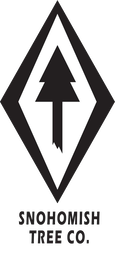|
Cutting dirty logs can be a long, laborious process. These tips will help speed up your process. Keep your chain sharpA sharp chain is a must for efficient cutting, whether wood is clean or dirty. If you notice these symptoms, it’s time to sharpen your chain:
Use more than one sawIf you’ve got an extra saw and extra chain, consider using it on the dirtiest work. Send that chain through the worst of it and you can make the cleaner cuts with the sharper chain. But you’ll need to establish a system so your saw-swapping doesn’t make you inefficient. Quickly clean what you canIf a few brief moments of brushing or removing bark clears most of the dirt, you can save a bit of time on sharpening in the long run. Cut strategicallyA thoughtful approach will reduce a lot of chain-on-dirt contact. When you’re about to cut, ask yourself if you’re about to pull dirt into the cut. Sometimes, simply cutting from a certain side can minimize dirt contact. Experienced loggers will often use more advanced techniques like plunge cutting. Use semi chisel (rounded tooth) chain cuttersA few different chain cutter types are available on the market. Among the chain types out there, semi chisels are the go-to for dirty work. They hold their edge well and are easy to sharpen. SEMI-CHISEL VS FULL-CHISEL(SQUARE TOOTH) Full chisel cutters cut very quickly when sharp, but they quickly dull in dirty wood. They are also more difficult to sharpen than semi chisels. What about chipper chains?In your search for the right chain, you may find references to "chipper chains". Chipper cutters are almost extinct. You’d be hard-pressed to find a true chipper chain at most shops, as most “chipper chains” now are closer to a semi chisel than the original chipper. There is good reason for this: chipper chains cut slowly. They hold their edge well and are easy to sharpen, but newer cutters like the semi chisel cut far faster. Use a semi-skip chain sequenceChains commonly come in a few different sequences: semi skip, full skip and standard. Semi skip chains are great for dirty wood. They are a good combination of durability, easy-to-use and quick to sharpen. Semi-skip vs full-skip sequenceFull skip sequence chains can get the job done, but you’ll burn more energy on most bucking because:
Semi skip vs Standard sequenceStandard sequence (also called “full complement” or “full house”) chains are designed for smaller, light duty work. They aren’t ideal for most dirty wood bucking because:
Should I use carbide-tipped chains?Carbide-tipped chains have been on the market for the last couple decades. Used mostly for firefighting and rescue operations, they’ve been touted as a superior solution for dirty wood because they don’t dull as quickly. If you’re a casual saw user, don’t bother with carbide tips. The longer-lasting edge isn’t worth the difficulty of sharpening or the cost. They’re also brittle, and sometimes chip if abused. A note on safetyRemember to prioritize safety when you’re cutting. Fast work, different chain types-these are great to talk about, but only if they are utilized in a safe way. Don’t rush, wear proper safety equipment and call a pro if your job carries too much risk to your safety. More resources for chainsaw chainsNeed more reading material on chains? Check out these resources from a few top manufacturers:
Do you want to turn some trees into firewood? Give us a call!
|
SNOHOMISH TREE COMPANYFollow our blog for industry insights, company updates, and tips for working with trees. Archives
February 2022
Categories |

 RSS Feed
RSS Feed
